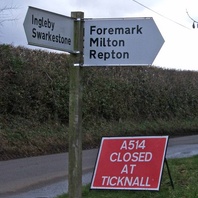
Viking Names
Foremark
Foremark, in the Repton and Gresley Hundred of Derbyshire, is a Scandinavian compound formed from the Old Norse elements forn ‘old’ and verk ‘work’. Thus, ‘old fortification’. The element verk undoubtedly was used in the Danelaw to describe a military or defensive structure; however, the element does not appear to be found in Scandinavian place-names. The place-name corresponds to the Old English place-name type Aldwark ‘old fortification’. One Aldwark is located in the Wirksworth Hundred of Derbyshire, and is situated near The Street, a Roman road, and Portway. Similarly a short distance east of Wall Hill and Foremark are raised earth formations, which perhaps could be the site of the original fortification. Furthermore, Foremark is very close to a known Great Heathen Army winter camp at Repton. Recent work by Dr Catrine Jarman has raised the possibility that Foremark is somehow related to that site, as outlined in a 2019 television programme, Britain’s Viking Graveyard.
Read More
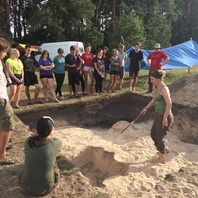
Blog Post
Vypovziv: A Viking Age outpost in Ukraine
In July 2018 a group of University of Nottingham students from the School of English went on an archaeological expedition to Vypovziv, Ukraine. The group was led by Dr Cat Jarman from the University of Bristol whose work on Viking camps at Repton has yielded spectacular results. As a result, Dr Jarman’s work with the Repton winter camp is particularly relevant to the project and allows sites such as Vypovziv to be compared more easily with its English counterparts. (c) William Pidzamecky The village of Vypovziv is located two hours north of Chernihiv and is the site of a Viking Age Rus outpost. The outpost served as a control point along the Desna river route as well as a toll/re-supply station for travellers and merchants coming along the river to or from Kyiv during the later 9th through to the late 10th century. The Viking outpost is located on top of a tall ridge that stands out in the low marshy landscape and would have bisected the Desna River. The site included a fortified area with a palisade and a surrounding open settlement. The site included a fortified area with a palisade and a surrounding open settlement. Vypovziv, and sites like it, shares many similarities such as layout, location, and types of artefacts to winter camps in England such as Torksey and Repton, where Dr Cat Jarman is currently conducting archaeological fieldwork. Vypovziv, Repton, and Torksey all had some form of defence to protect them, were located in naturally strategic positions near rivers which provided easy access by boat, and at one stage in their lifespan became administrative and/or commercial centres. All three sites had a mixture of inhabitants, including women and children, and were specifically created by Scandinavian immigrants. The main difference between them is the initial motivation for their founding, Vypovziv was established as a point of control along a trade route while sites such as Repton and Torksey began life as a base for the Great Viking Army invading England. The Nottingham team were given a previously unexcavated section within the boundaries of what would have been the settlement area of the outpost just down the ridge from the fortified area. The artefacts found ranged in date from the late 9th century to the 12th century and included tools such as needles and awls, imported and local glass beads, imported jewellery, and various pieces of pottery, one making its way from the Byzantine Empire. The last day produced perhaps the most interesting finds, two ovens demarcating two separate dwellings. The team looks forward to returning next July to continue their exciting work. The expedition was made possible by funding secured by William Pidzamecky through the Cascade Grants Programme. The group joined the archaeological team from the University of Chernihiv, led by Dr Vyacheslav Skorohod, which has been excavating at the site for over a decade.
Read More

Blog Post
Winter Camps in the East Midlands: Commerce and Industry
Viking winter camps were more than just bases for the Great Army to live in during the winter or centres from which armed Viking bands could conduct military activities. From their inception winter camps established and maintained economic functions whether as centres for trade or industry. Both Repton and Torksey were placed in a location that allowed them to take advantage of the River Trent as a means of transportation of people and goods. Repton’s evidence for trading activities is not as abundant at Torksey but finds of lead weights as well as Anglo-Saxon and Frankish coins point towards commercial activities. Evidence of industrial activities at the site includes several ship nails, include slag, woodworking tools, the tip of a Viking axe head, an area for metal working, and another area with signs of butchering of animals (Jarman 2018a, 33–34; 2018b, 20–21; Biddle and Kjølbye-Biddle 2001, 72). The nails and, perhaps, the woodworking tools could be taken as evidence for ship repair. It is also to keep in mind that the nature of extended occupation, the likelihood of camp followers, especially women, as well as the need for animals and supplies further evidences non-military activities and a larger occupation area than the fortified enclosure (Raffield 2016, 15, 21). A silver penny of Alfred the Great found at Repton, Derbyshire. (c) Derby Museums 2019 Archaeological excavations of Torksey have uncovered quite a few pieces of bullion, including hacksilver and jewellery (Raffield 2016, 313, 319; Hadley and Richards 2016, 27; Blackburn, Williams, and Graham-Campbell 2007, 71–72; Williams 2007, 183; McLeod 2014, 122–23). The relatively high concentration of gold at Torksey suggests that it was being used in transactions and not just as a status symbol which may explain the presence of hack-gold, ingots, and gold plated copper coins (Hadley and Richards 2016, 47; Blackburn, Williams, and Graham-Campbell 2007, 75–77; Blackburn 2011, 233–34). A large abundance of lead weights were also found, which are associated with merchants, with 15 resembling Scandinavian/Islamic weights from Sweden (Hadley and Richards 2016, 48; McLeod 2014, 159). Over 350 coins were also found on the site including English silver pennies, stycas from Northumbria, an imitation Frankish solidi of Louis the Pious, and 124 Arab dirhams (Hadley and Richards 2016, 43; Blackburn 2011, 225). The Arabic coins further prove just how connected the site would have been to the wider Scandinavian trade network even during the army’s years of campaigning. Hackgold Ingot fragment found in Torksey, Lincolnshire. © The Fitzwilliam Museum, Cambridge A variety of overwintering activities would have occurred at Torksey. Alongside iron clench nails, a hoard of iron woodworking nails have been discovered making it likely that Torksey would have been ideal for the repair of ships (Hadley and Richards 2016, 53–54). Additionally, worn and damaged tools were located alongside fragments of iron vessels seemingly ready to be reworked (Hadley and Richards 2016, 53). Furthermore, the discovery of spindle whorls, needles, punches and awls suggest textile-working, a job generally undertaken by women and thus providing potential evidence for a female presence at the camp (Hadley and Richards 2016, 54). These finds also suggest that overwintering activities such as the repair of sails, tents and clothing took place. Along with trading goods plundered from their campaigns, the Great Army also employed craftsmen to manufacture pottery as a tradable commodity. Evidence of pottery production at Torksey was first ascertained by excavations south of the modern village in 1949 (Perry 2016, 74). The spread of so-called ‘Torksey ware’ was vast and it even became the major pottery type at York to the point where archaeologists first assumed that it was locally made (Perry 2016, 76). An iron clench nail found near Torksey, Lincolnshire. (c) Portable Antiquities Scheme, CC BY-SA 2.0 Biddle, Martin, and Birthe Kjølbye-Biddle. ‘Repton and the “Great Heathen Army”, 873–4’. In Vikings and the Danelaw: Select Papers from the Proceedings of the Thirteenth Viking Congress, edited by James Graham-Campbell, Richard Hall, Judith Jesch, and David Parsons, 45–96. (Oxford: Oxbow Books, 2001). Graham-Campbell, James, and Gareth Williams. Silver economy in the Viking Age. (Walnut Creek, California: Left Coast Press, 2007). Hadley, Dawn M., and Julian D. Richards. “The winter camp of the Viking Great Army, AD 872–3, Torksey, Lincolnshire.” The Antiquaries Journal 96 (2016): 23-67. Jarman, C. “Resolving Repton: has archaeology found the great Viking camp.” British Archaeology (2018): 28-35. Jarman, Catrine L., Martin Biddle, Tom Higham, and Christopher Bronk Ramsey. “The Viking Great Army in England: new dates from the Repton charnel.” antiquity 92, no. 361 (2018): 183-199. McLeod, Shane. The Beginning of Scandinavian Settlement in England The Viking’Great Army’and Early Settlers, c. 865-900. (Turnhout: Brepols, 2014). Perry, Gareth J. “Pottery production in Anglo-Scandinavian Torksey (Lincolnshire): reconstructing and contextualising the chaîne opératoire.” Medieval Archaeology 60, no. 1 (2016): 72-114. Raffield, Ben. “Bands of brothers: A re‐appraisal of the Viking Great Army and its implications for the Scandinavian colonization of England.” Early Medieval Europe 24, no. 3 (2016): 308-337.
Read More
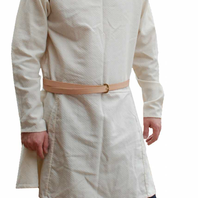
Viking Objects
Reproduction Men’s Clothing Set
The woollen tunic is in white broken diamond twill. Few Viking Age woollen tunics survive intact, but a number of large pieces of skirts and side gores, and arm-hole and sleeve pieces were found at Hedeby, in Denmark. This tunic is made from a composite of all these fragments. The woollen trousers are dark blue/grey herringbone twill. These are based on the archaeological remains of the crotch of a pair of baggy trousers, found at Hedeby, in Denmark, which also appear on a number of Viking Age stone carvings across the Viking world, but particularly in Sweden. The woollen leg-bindingins are yellow herringbone twill, based on original fragments from Hedeby, in Denmark. The vegetable-tanned leather belt, with a ring-and-dot decorated brass buckle, is based on an original found in a male grave (Grave 511), at Repton, Derbyshire.
Read More
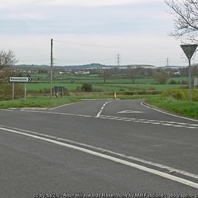
Viking Names
Ravenstone
Ravenstone, in the West Goscote Hundred of Leicestershire, is a hybrid name from the common Old Norse male personal name Hrafn combined with Old English tun ‘farm, settlement’. It has been suggested that the first element might be the Old English male personal name Hræfn, but it is unlikely. Ravenstone was originally part of the Repton and Gresley Hundred in Derbyshire and was transferred to Leicestershire in 1884 as a joint parish with Snibstone.
Read More
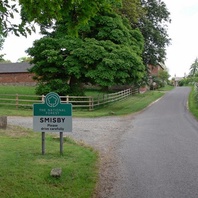
Viking Names
Smisby
The first element of Smisby, in the Repton and Gresley Hundred of Derbyshire, is either Old Norse smiðr ‘smith’ or it Old English cognate smið, the second element of the place-name is Old Norse by ‘a farmstead, a village’.
Read More
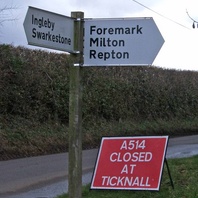
Viking Names
Ingleby
Ingleby, in the Repton and Gresley Hundred of Derbyshire, takes its name from the Old English ethnonym Engle ‘the Angles, later the English’ and Old Norse by ‘a farmstead, a village’. There is also an Ingleby in Lincolnshire (historically Yorkshire). This Ingleby is close to the Viking winter camp at Repton, and the site of a unique Viking Age cremation cemetery. The exact implications of such a name are not yet fully understood and are the subject of ongoing work by Dr Jayne Carroll of the Institute for Name-Studies, University of Nottingham.
Read More
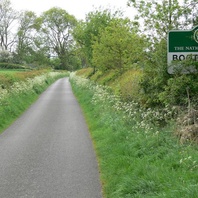
Viking Names
Boothorpe
Boothorpe, in the West Goscote Hundred of Leicestershire, probably comes from the Old Danish male personal name Bo (Old Norse Búi) and the Old Norse element þorp ‘outlying farm, settlement’. Alternatively, the first element of the place-name could be Old English boga or Old Norse bogi ‘bow’ which would be topographically appropriate because the settlement lies on a curving hilltop.
Read More
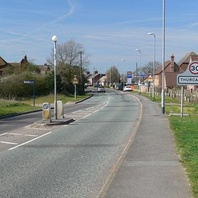
Viking Names
Thurcaston
Thurcaston, in the West Goscote Hundred of Leicestershire, is a hybrid name. The first element comes from the Old Norse male personal name Þorketill, common in Norway, Iceland, Sweden and Denmark throughout the whole of the medieval period and also common in Normandy before 1066. Þorketill is an older version of the Old Norse male personal name Þorkell. The second element is Old English tun ‘farm, settlement’.
Read More
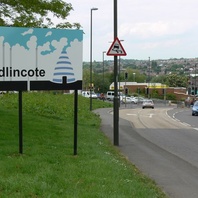
Viking Names
Swadlincote
Swadlincote, in the Repton and Gresley Hundred of Derbyshire, probably comes from the Old Norse male personal name Svartlingr and the Old English element cot ‘cottage, hut, shelter, den’. However, it is possible that the first element may equally well represent the Old English male personal name Sweartling.
Read More
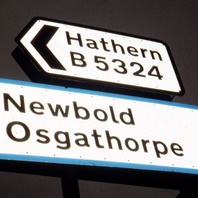
Viking Names
Osgathorpe
Osgathorpe, in the West Goscote Hundred of Leicestershire, comes from the Old Danish male personal name Asgot (Old Norse Ásgautr) and the Old Norse element þorp ‘outlying farm, settlement’. Some later forms of the name show replacement by the Norman male personal name Angod. In the neighbouring Thringstone in Coalville parish, the field-names Ossegodishaug and Hosgothawe (with Old English haga or Old Norse hagi ‘enclosure’) presumably record the same owner of land.
